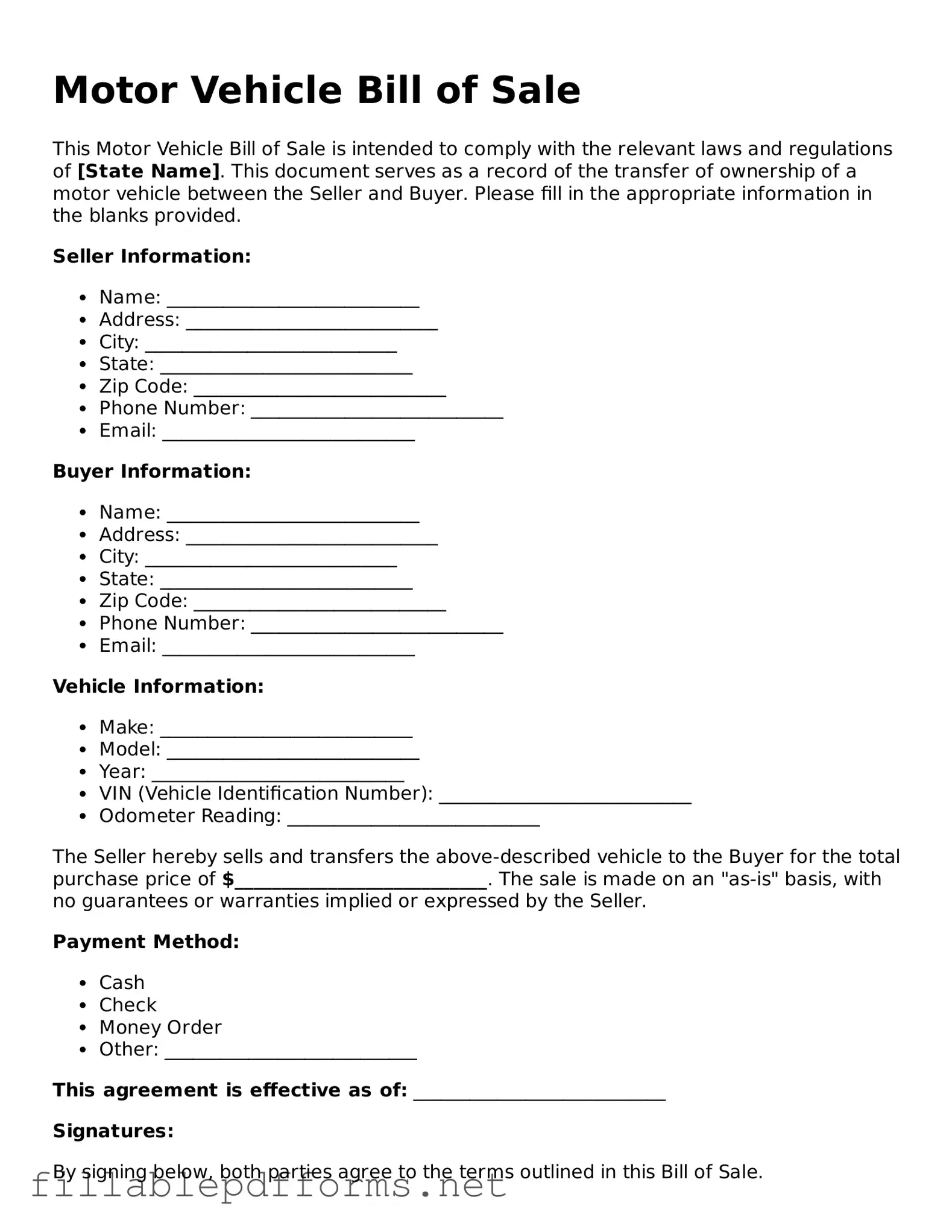The Motor Vehicle Bill of Sale form serves as a crucial document in the process of buying or selling a vehicle. This form captures essential information about the transaction, including details about the vehicle itself, such as the make, model, year, and Vehicle Identification Number (VIN). It also records the names and addresses of both the buyer and the seller, ensuring that both parties are clearly identified. The form typically includes the sale price and the date of the transaction, which are important for establishing the terms of the sale. Additionally, it may contain sections for any warranties or guarantees provided by the seller, along with a statement confirming that the vehicle is free of liens or other encumbrances. By using this form, both buyers and sellers can protect their interests and provide a clear record of the transfer of ownership, making it an essential part of any vehicle sale or purchase. Understanding the significance of this document can help ensure a smooth and legally sound transaction.
